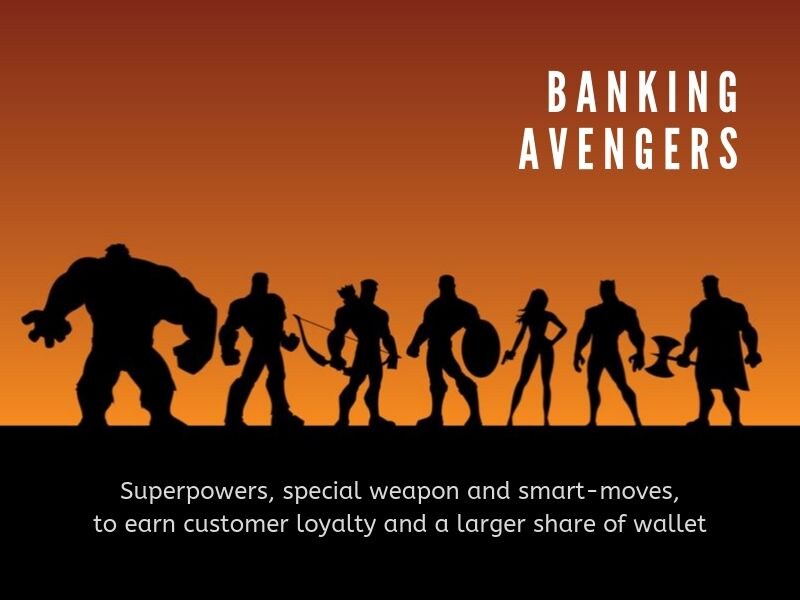Home > Blogs > Artificial Intelligence based banking: Ideal robots serving Idle humans
Artificial Intelligence based banking: Ideal robots serving Idle humans

Introduction
Artificial intelligence (AI) as the name implies, is a technology-driven attempt to make machines think and act like humans. The advances in various streams of computing and technology are increasingly making it feasible to implement AI in almost all walks of life. So, imagine a future where machines “think”, “speak”, “learn”, “memorize”, “move” and “do” everything the way we humans do? That is what Artificial Intelligence (AI) seeks to achieve. The core of AI is essentially typifying and codifying the human brain for its ability to gather, process, and store complex patterns of sensory data (audio, visual, tactile, smell etc.), and then make intelligent and rational decisions out of seemingly conflicting data.
The powerful and unique brain powers conferred survival benefits to human ancestors and helped them evolve into complex but harmonious human societies. Now with humans trying to mimic themselves completely with machines in these times, evolution seems to have turned a full corner. We can put such machines to many creative uses – acts which humans don’t dare to do or are prone to make mistakes while doing. For example, accessing hazardous substances in a nuclear plant or reaching out to dangerous places on rescue missions, or assisting doctors perform precision surgeries and so on.
AI in Banking
When machines can perform human tasks more powerfully, faultlessly and routinely than humans, we have a case made for replacing humans with those machines for automation. While many tasks have been automated from the time technology entered our realms, AI-inspired automation is a completely different beast altogether. When it comes to banking, there is no doubt that AI-based automation will revolutionize, disrupt and likely turn banking on its head.
To look at the possibilities of AI and automation in banking could mean looking at what is likely to be still done with human intervention. The AI chatbot of present times can metamorphose into robots which will perform all the routine yet complex banking transactions with utmost sincerity and alacrity, all the while keeping the visiting customer engaged with the most courteous behavior. The robot can be armed with complete social, biological, scholastic and career profiles of the customer along with the ability to gauge the customer mood using body sensing means, so that it can optimize and offer the most pleasing and plausible experience every time.
The future of Banking with AI
Experts say that, AI will likely replace half the human jobs in financial services industry, in a decade. The prospects for job losses look intimidating and stark but that is beside the point. With the need for human intervention drastically reducing from the front desk to back desk to management, it remains to be seen what kind of bank we will come to experience in say 50 years from now. Maybe there will be owners of banks, their slew of automated robots doing the bank operations and a few humans for some essential work. This opens up the possibility for banks to be owned by anyone who has the capacity to buy the most powerful robots to run the bank which gives best-in-class experience to customers. Since robots lend themselves to easy changeability in software, regulations, processes and all the required changes are continually fed to the robots, they can undergo seamless and real-time updates.
The Differentiator
It is very difficult to speculate what will differentiate one bank from another when automation takes over completely. Since AI enables self-learning, all robots will learn and perform most tasks efficiently and quickly. The sophistication of the algorithms in learning new patterns, and the speed with which these machines pick new knowledge could perhaps determine the differentiating factors. That may also even out in due course.
It is clear that as robots become more and more sophisticated the difference between a human and a robot will blur. In the banking context, transactions that call for ‘human touch’ are still governed by the transitory moods and personalities of the individuals concerned. This is a basic limitation of human-based transactions that can never be overcome. With robots and full-blown chat bots and robots which are continuously learning from experiences and are armed with each customer’s emotions, body language and background detail, digital technologies can deliver experiences similar to those delivered by humans, sans the transitory moods. In a way, banking as we know and practice today, might come to an end and will be replaced and dominated by 100% effective and efficient humanoids who will offer more than a human touch.
Conclusion
The meaning of human existence will need to factor robots that will replace them in almost all walks of human endeavors. In essence human existence will likely become one of greatest redundancies even if one assumes that humans will find answers to the problem of meeting the livelihood needs. For banks, one can foresee a large number of automated AI-based robots working feverishly and meticulously, serving its customers located all over the globe equally well. It will be a totally different economy altogether, an AI driven economy at that.
Leave a Reply
One thought on “Artificial Intelligence based banking: Ideal robots serving Idle humans”
-
Interesting blog Santhy. Agree banking will not be the same and we may have to be mentally ready for it. My human ego, some where i still wish the superiority of humans ride over the humanoids in all times.
Load more comments...


Santhy Sreedhar
Principal Consultant, Infosys Finacle
More blogs from Santhy Sreedhar >